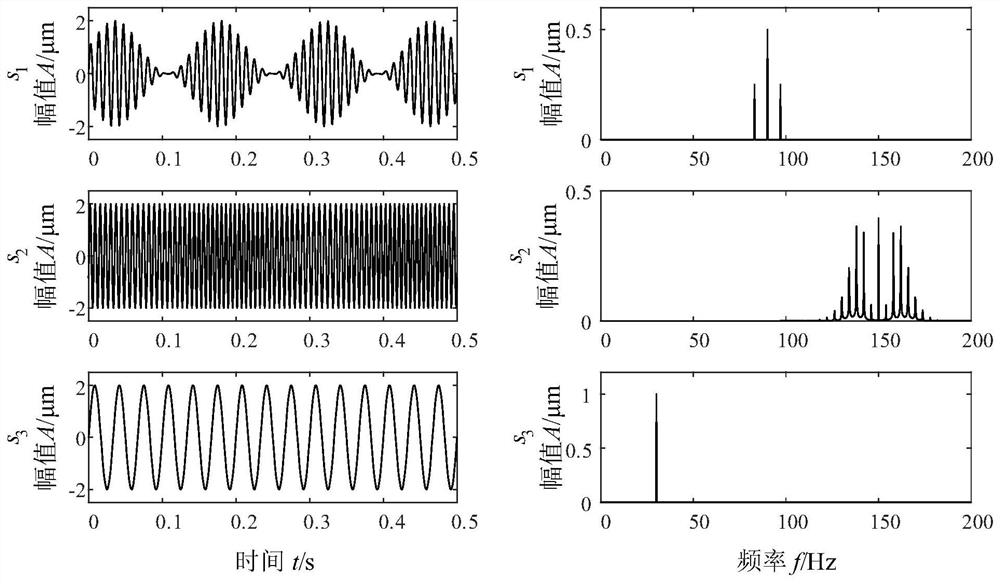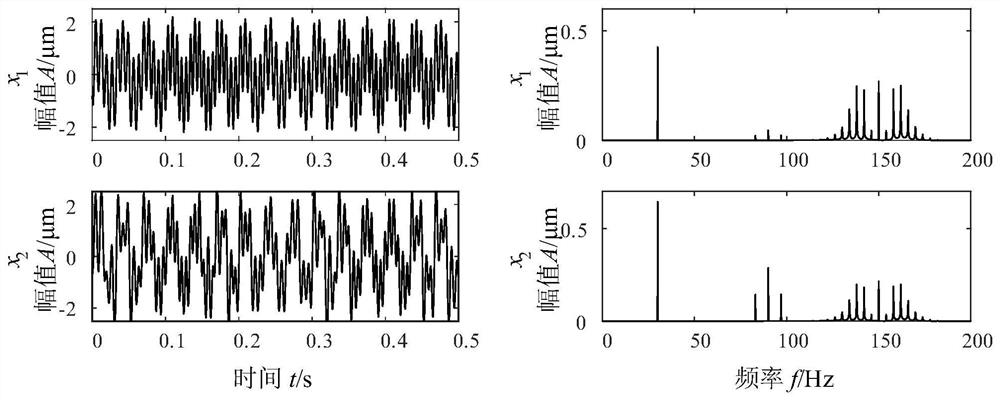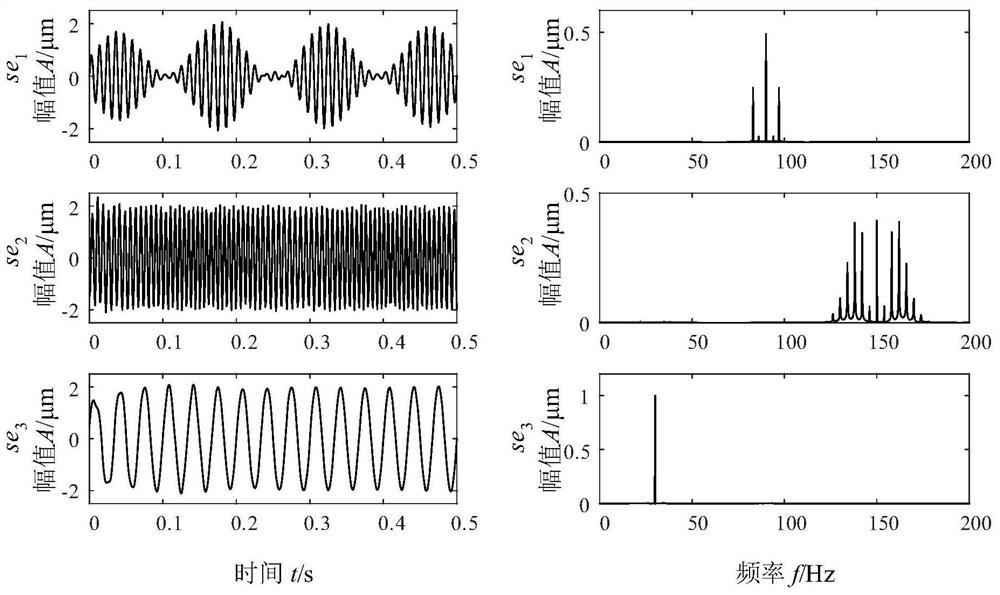Underdetermined blind source separation method, system and device based on minimization and maximization
An underdetermined blind source separation, minimization and maximization technology, applied in speech analysis, character and pattern recognition, pattern recognition in signals, etc., can solve problems such as inability to effectively separate mechanical mixed signals and source signal errors, and achieve Simple structure and improved separation accuracy
- Summary
- Abstract
- Description
- Claims
- Application Information
AI Technical Summary
Problems solved by technology
Method used
Image
Examples
example 1
[0056] In Example 1, three typical mechanical signals are selected as source signals, and their expressions are as follows:
[0057]
[0058] The obtained source signal waveform and its spectrum are as follows figure 1 As shown, the source signal is passed through the mixing matrix to obtain the observed mixed signal, and the number of observations is 2, figure 2 For the waveform and spectrogram of the mixed signal, the mixing matrix is selected as shown in the following formula.
[0059]
[0060] from figure 2 It can be seen from the figure that due to the mutual superposition of the source signals, it is difficult to see what kind of signal product is contained in the time domain waveform of the observed signal. Although its frequency characteristics can be seen from the frequency spectrum, due to lack of prior knowledge, it is impossible to confirm which Part of the frequency domain comes from which source, so an estimate of the source signal cannot be obtained ...
PUM
 Login to View More
Login to View More Abstract
Description
Claims
Application Information
 Login to View More
Login to View More - R&D
- Intellectual Property
- Life Sciences
- Materials
- Tech Scout
- Unparalleled Data Quality
- Higher Quality Content
- 60% Fewer Hallucinations
Browse by: Latest US Patents, China's latest patents, Technical Efficacy Thesaurus, Application Domain, Technology Topic, Popular Technical Reports.
© 2025 PatSnap. All rights reserved.Legal|Privacy policy|Modern Slavery Act Transparency Statement|Sitemap|About US| Contact US: help@patsnap.com



